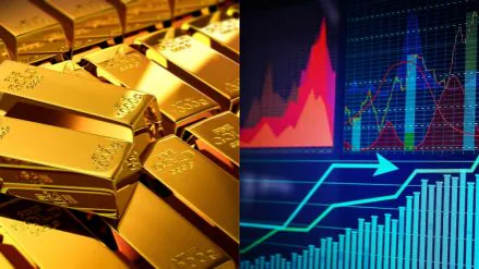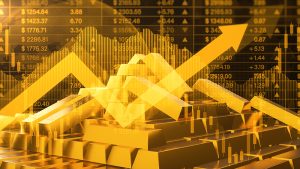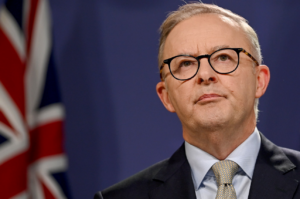Bridging the Gap between Gold Skepticism and Real-World Investors Market: Two Worlds, One Market

As gold smashes through $4,000, investors are turning back to the oldest safe haven in human history. But what does this glittering rush say about fear, faith, and the fragile future of money?
On a cool Wednesday morning in New York, screens across trading floors flickered with a number that glittered brighter than most: $4,000. Gold, the world’s oldest form of money, the metal that outlasted empires and currencies, had crossed a record high. To some, this milestone was inevitable. To others, it was irrational. On the other hand, to most investors it was simply a survival means.

“We’re living through a moment that rhymes with the early 1970s,” said Ray Dalio, founder of Bridgewater Associates, the world’s largest hedge fund. “Debt is high, monetary policy is uncertain, and confidence in paper assets is fading.” Recommending that investors hold as much as 15% of their portfolios in gold.
It’s a sentiment that’s spreading fast. With inflation still stubborn, wars raging from Eastern Europe to the Middle East and global currencies wobbling under debt pressures, gold that is presently inert, though ancient and unyielding, suddenly feels alive again.
Gold’s rally, pushing through $4,000 an ounce for the first time, isn’t just about numbers on a screen. It’s about psychology. When faith in governments, banks, and markets weakens, the instinct is timeless: reach for something solid.
Even J.P. Morgan, in his 1912 testimony before Congress, cut through financial jargon with a single truth: “Gold is money. Everything else is credit.”
A century later, investors seem to be echoing his words with their wallets. The metal’s surge has come amid growing bets that the U.S. Federal Reserve will resume cutting interest rates — moves that typically weaken the dollar and make gold more attractive.
Yet not everyone is dazzled by gold’s shine. Warren Buffett, the Oracle of Omaha, has long been one of its sharpest critics. In 1998, he quipped: “It gets dug out of the ground in Africa, or someplace. Then we melt it down, dig another hole, bury it again and pay people to stand around guarding it. It has no utility. Anyone watching from Mars would be scratching their head.”
Buffett’s Martians might still be puzzled, but Earthlings aren’t. In times of uncertainty, utility takes on a different meaning, not in production or to dividends, but in peace of mind. And for many, that’s worth its weight in gold.
The AI Boom and the Tech Tensions Beneath It: If gold is the refuge of the anxious, artificial intelligence is the playground of the ambitious. Yet both markets share one trait: volatility. The same week gold hit $4,000, Nvidia and OpenAI unveiled what CEO Jensen Huang called a “different kind of partnership.” Nvidia, which plans to invest up to $100 billion in OpenAI’s infrastructure, aims to tighten its grip on the AI data-center market. “This isn’t just another chip sale,” Huang told analysts. “It’s a deep, direct collaboration.”
Still, not every company is thriving under the AI gold rush. Oracle, which has been renting out Nvidia-powered cloud services to firms like OpenAI, saw its stock drop after reports revealed its AI cloud margins were just 14%, far below its overall 70% average. Thin profits, thick competition, not all that glitters in AI is gold.
Meanwhile, the S&P 500 broke its seven-day winning streak, sliding 0.38% as investors grew uneasy over whether the AI boom has already become a bubble. The Nasdaq and Dow followed suit, and even Europe’s Stoxx 600 gave up early gains.
On CNBC, Josh Brown, CEO of Ritholtz Wealth Management, offered a dose of realism: “Yes, there’s a bubble forming in parts of AI. But there are also plenty of real projects worth investing in. You just have to separate the code from the hype.”

Markets are mirrors of mood. And this week’s reflection is complicated. A mix of excitement and exhaustion. Investors are torn between two visions: one of a dazzling, data-driven future, and another that looks backward, toward the ancient security of gold.
In a way, gold’s surge isn’t a rejection of progress. It’s a reminder of limits. The same technology that builds artificial intelligence also builds fragility in systems, currencies and even confidence.
Perhaps Buffett’s Martians would still scratch their heads at humans digging for shiny rocks. But they might also marvel at how, in an age of algorithms and cloud computing, the most human instinct remains unchanged: when in doubt, hold something that can’t vanish in a crash or a code.
As Dalio put it, “Gold doesn’t promise returns. It promises survival.”
The Market Recap
- Gold: Hits record $4,000/oz as investors seek refuge from inflation and uncertainty.
- Nvidia & OpenAI: Launch new “direct partnership” for AI data centers; Nvidia plans up to $100B investment.
- Oracle: Shares fall as AI cloud margins shrink to 14%.
- S&P 500: Down 38%, ending seven-day streak.
- AI bubble debate: Experts warn hype may outpace profitability — but “real” innovation remains.






